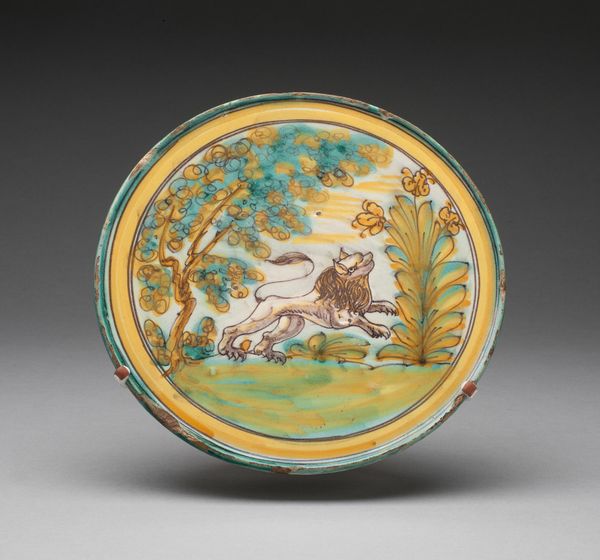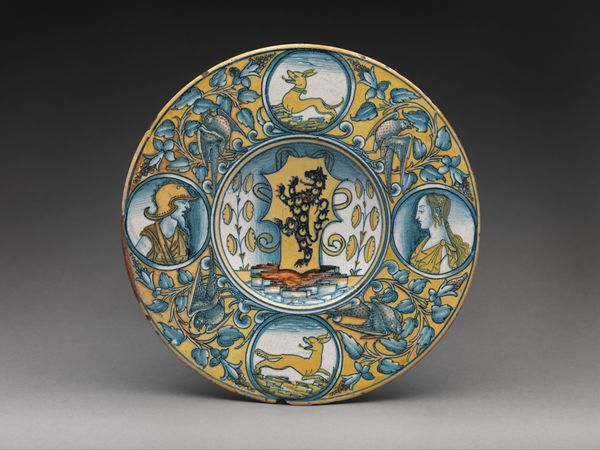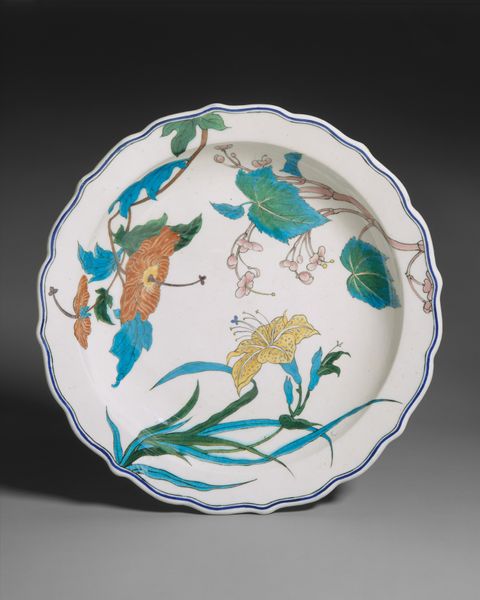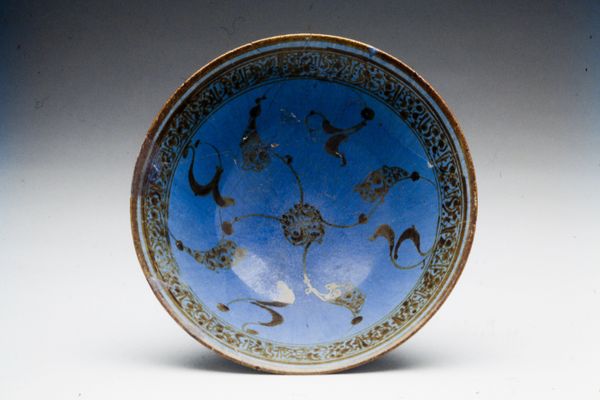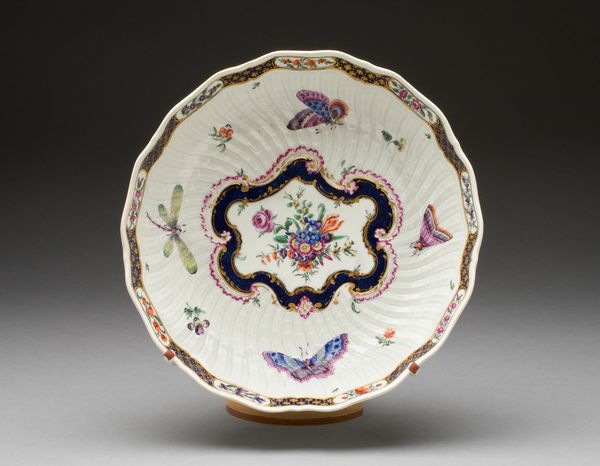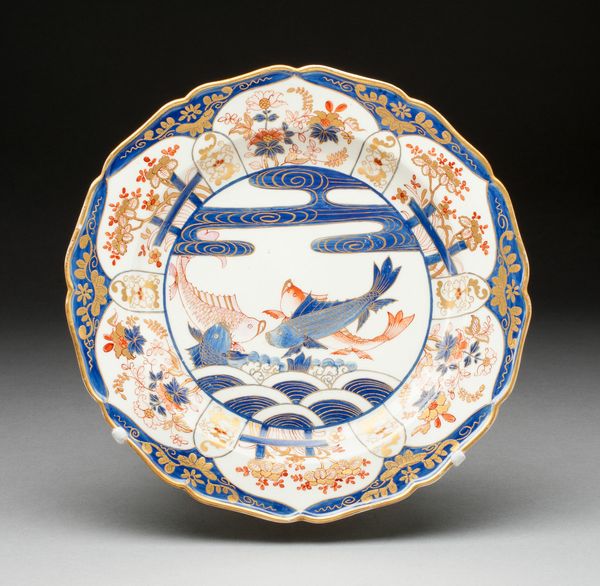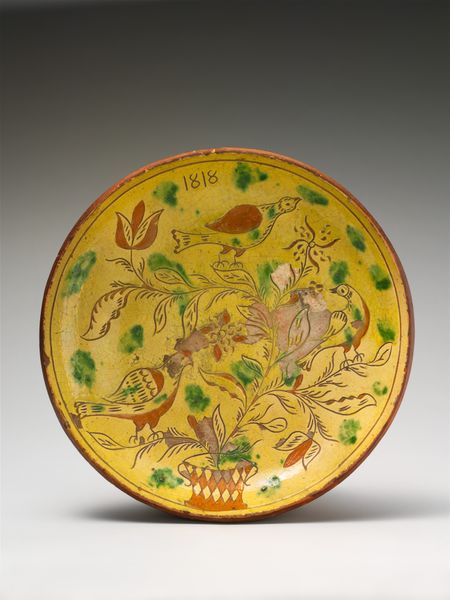
painting, ceramic, earthenware
#
painting
#
landscape
#
ceramic
#
figuration
#
11_renaissance
#
vessel
#
earthenware
#
stoneware
#
ceramic
#
genre-painting
#
trompe-l'oeil
#
decorative-art
#
italian-renaissance
Dimensions: 5.1 × 26.7 cm (2 × 10.5 in.)
Copyright: Public Domain
Editor: This ceramic charger, crafted by Talavera de la Reina Potteries around the 17th century, presents a whimsical landscape. The slightly naive painting style gives it a charming, folk-art quality. What’s particularly striking is how they’ve elevated what might have been seen as a simple utilitarian object through the painted decoration. How do you interpret this work? Curator: It's precisely that tension between the everyday object and the painted surface that intrigues me. Look at the process: earthenware, a readily available material, is transformed through labor and skill into something more. This wasn't fine porcelain for a noble’s table, but earthenware produced perhaps for a more middle class household. How does that inform our understanding of art in this period? Editor: That's fascinating! I hadn't considered the socioeconomic implications of the material itself. Does the landscape painted onto it provide a clue to the kind of market this pottery served? Curator: I believe it does. Landscapes became incredibly popular during the Renaissance, not just in painting but also in decorative arts. Notice how this painter flattens perspective, almost mimicking tapestry or even book illustration? This "ceramic painting” provides a window onto contemporary life for its owner, who is then encouraged to see the vessel as a landscape scene, and also a prized item for dining, storage or collection. What labor went into that? Editor: Thinking about it, each stage from clay mining to firing and painting represents the contributions of artisans whose efforts are immortalized in the final product. I initially overlooked how the use of humble materials can reveal a great deal about craft and production culture. Curator: Exactly. It’s easy to get lost in stylistic analysis, but considering materials and process connects the object to its historical moment and the social forces at play. It makes you appreciate the true material culture history contained in this vessel.
Comments
No comments
Be the first to comment and join the conversation on the ultimate creative platform.

